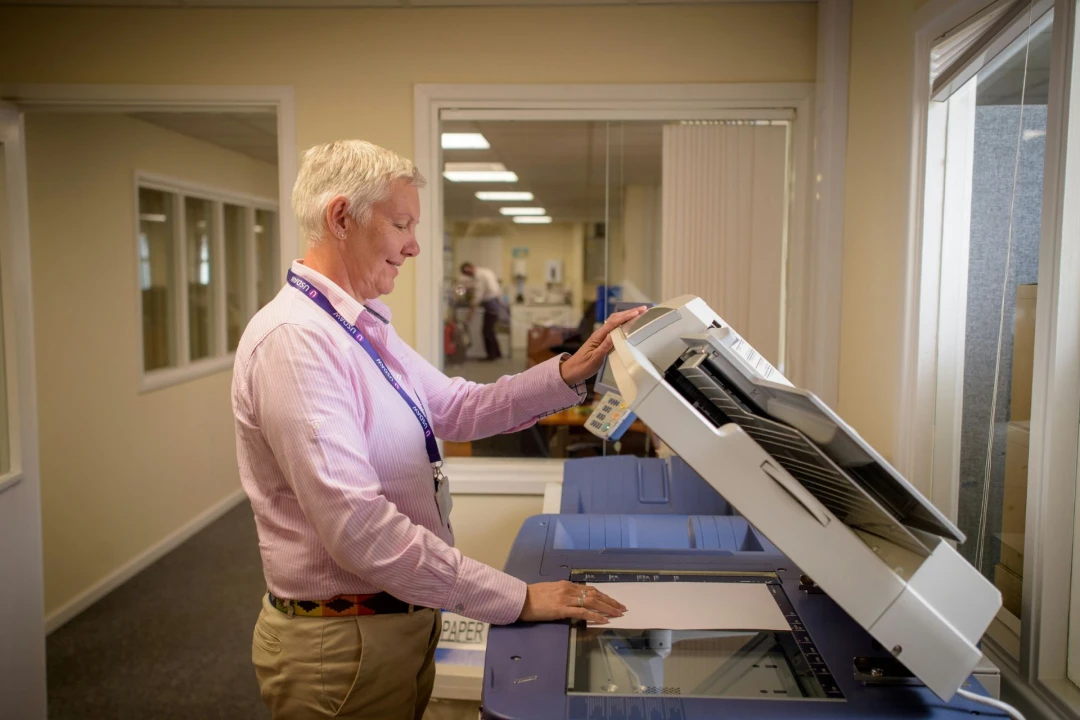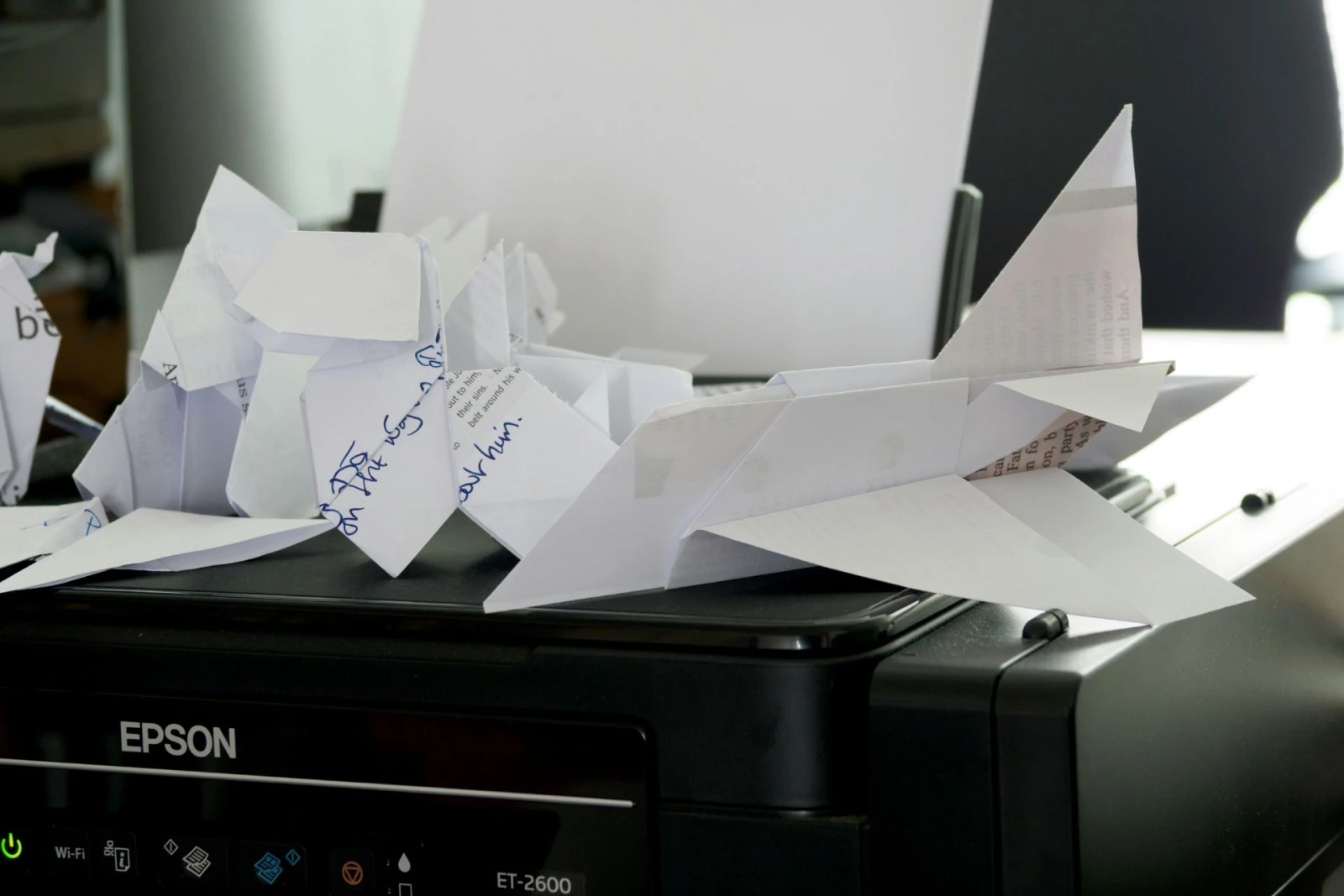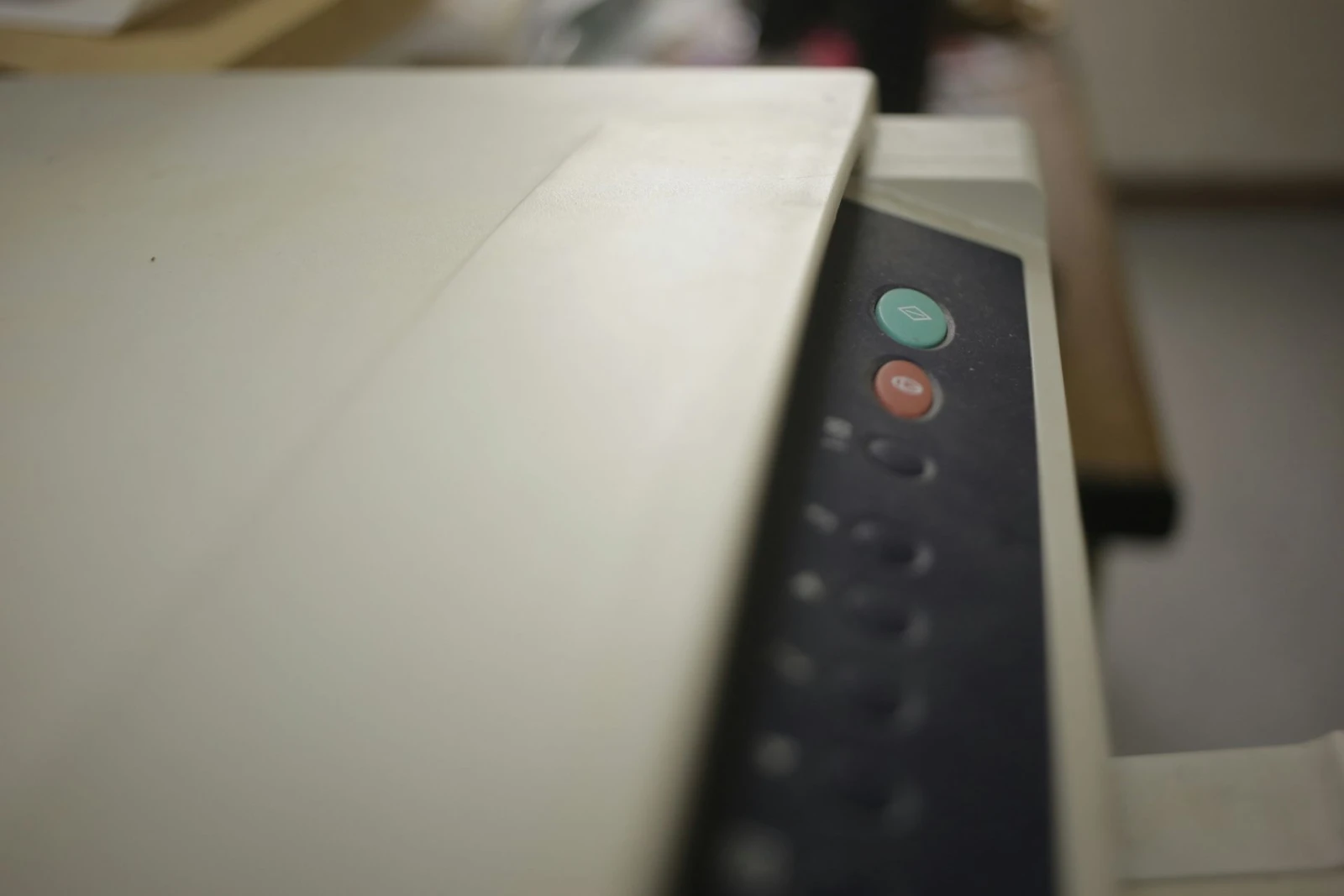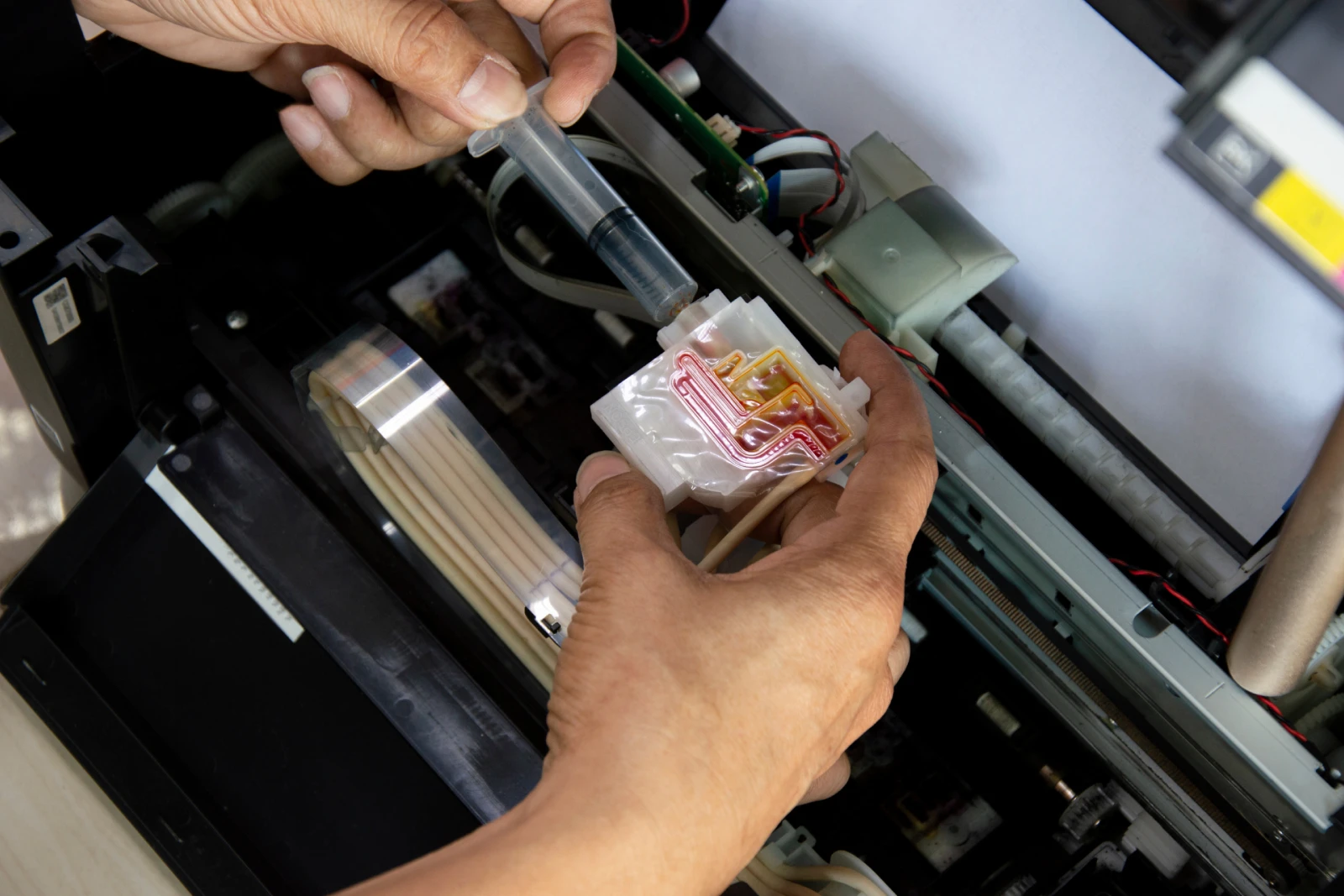News & Updates
Reduce printing costs and optimize your office workflow with cost-effective printing strategies. Track black and white print cost,

Reduce printing costs and optimize your office workflow with cost-effective printing strategies. Track black and white print cost, colour print cost per page, and photo printing expenses using analytics and managed print services to save money and improve efficiency.
For many organizations, printing remains an invisible expense until budgets tighten.
From consumables like toner and paper to maintenance and energy, the cost of office printing can quietly consume 1% to 3% of annual revenue.
Departments that print frequently, such as finance, legal, and operations, tend to drive up the average print cost per page. Yet few organizations track who prints what, when, or why. That lack of oversight makes it nearly impossible to control colour print cost per page or minimize waste.
Reducing printing costs doesn’t mean printing less; it means printing smarter. In this guide, we’ll explore ways to reduce printing costs while streamlining document workflows.
1. Implement Clear Print Policies
Establishing a formal print policy is one of the simplest ways to reduce costs. It sets expectations across every department so everyone understands what’s okay to print, when, and how.
Start by defining who can print in colour, setting page limits, and creating rules for job approval. Keep the black and while printing policy simple and easy to follow. Complex rules usually get ignored.
Examples of smart print policy rules include:
- Limiting colour printing for internal documents
- Setting default duplex (double-sided) printing
- Enabling secure release authentication
- Auto-deleting idle print jobs after a set time
With a Managed Print Services (MPS) provider, you can automate these policies across your entire print fleet, ensuring every device follows the same standards, eliminating the need for manual policing.
2. Track Print Volumes with Analytics
You can’t manage what you don’t measure. Take advantage of the data your multifunction units, inkjet printers or managed print service providers already collect. It can reveal exactly where your printing budget is going, and where to cut back.
Print analytics tools provide visibility into key metrics, including average print cost per page, device usage patterns, and departmental trends. This information helps you shape smarter print policies and allocate budgets more accurately.
Printer dashboards typically track:
- Monthly print volumes by user or department
- Toner consumption and supply usage
- Device uptime and performance
- Cost per department to flag heavy users
Integr8’s analytics suite helps IT and procurement teams pinpoint inefficiencies, enabling proactive addressing before maintenance is required.
3. Encourage Duplex (Double-Sided) Printing
Single-sided printing can double your paper use overnight, which in turn can significantly increase your costs. Switching to duplex printing as the default instead can cut paper waste by up to 50% without changing anyone’s workflow. It’s one of the simplest ways to lower costs while supporting your sustainability goals.

Image source: Unsplash
4. Digitize and Automate Workflows
One sure cost-effective printing practice is to digitize your document workflows. By reducing or eliminating the need to print, you lower your reliance on physical documents, which in turn reduces toner, energy, and printing paper costs.
Here are a few practical ways to start digitizing:
- Replace paper forms with digital equivalents to speed up data entry and reduce printing altogether
- Scan and archive documents with searchable metadata so information is easy to find without reprinting
- Use cloud-based storage that integrates with your MPS solution for seamless access anywhere
5. Upgrade Outdated Devices
Old printers may still work, but they’re often costing you more than you think. Aging devices typically consume more energy, break down more often, and require harder-to-find (and more expensive) replacement parts.
Rather than spending on maintenance, consider upgrading to modern printers. This upgrade can boost uptime, speed up your processes, and lower repair costs over time.
ENERGY STAR®-certified multifunction printers (MFPs) and copiers use up to 35% less energy than standard models. Many newer devices also include built-in print management features, such as automatic sleep mode, toner conservation, and secure print release, which help you control both usage and cost.
With Integr8, you can standardize hardware across locations to simplify maintenance and ensure consistent, predictable performance.

Image source: Unsplash
6. Optimize Fleet Placement
When it comes to printers, it’s all about balance. Too few and you’ll get bottlenecks that slow everyone down. Too many, and you’re stuck maintaining underused devices that drain your budget. Knowing the sweet spot starts with understanding how your teams actually use their printers.
Use your print analytics to determine the optimal number of printers and their ideal placement. A smart layout minimizes wasted time walking to distant devices, improves uptime, and reduces maintenance tickets across distributed teams.
Key factors to consider include:
- Device-to-employee ratio
- Departmental workload distribution
- Network connectivity strength
Integr8 conducts print environment assessments to map out the optimal device placement, ensuring you get the perfect balance between accessibility and cost efficiency.
7. Switch to Managed Print Services (MPS)
Outsourcing your print management to an MPS provider consolidates maintenance, supply orders, and fleet monitoring into one streamlined solution. The result? Not only cost savings, but also time and effort saved for IT and operations teams.
Organizations that implement MPS often see printing costs drop by 20% to 40% within the first year, making it one of the fastest ways to improve your office’s efficiency.
With Integr8, clients benefit from:
- Centralized control over every device in the fleet
- Automated toner and supply replenishment
- Predictive maintenance alerts to prevent downtime
- Data-driven usage reports for smarter decisions
MPS shifts printing from an uncontrolled expense to a managed, measurable service, giving you greater visibility and more control over your printing costs and daily operations.
Learn more: Benefits of Managed Print Services
8. Consolidate Underused Devices
Device sprawl is one of the biggest hidden cost drivers in large organizations. Even if they're barely used, idle printers still consume energy, service time, and maintenance.
Conducting a fleet audit helps identify which devices can be decommissioned, redeployed, or consolidated to cut waste and improve efficiency.
Integr8 helps clients replace single-function printers with multifunction hubs that handle printing, scanning, and copying, a cost-effective practice to reduce carbon footprint while boosting overall capacity and performance.

Image source: Canva
9. Prioritize Energy and Supply Efficiency
Even small sustainability improvements can add up to significant cost savings over time. Make the most of eco-friendly print settings, such as:
- Toner-saving modes to stretch ink cartridges further
- Grayscale default for internal memos and drafts to use less ink
- Scheduled power-down periods to reduce idle energy consumption
Pair these practices with high-yield toner cartridges and recycled paper options to minimize both operational expenses and environmental impact.
With Integr8, these energy- and supply-saving strategies can be automated across your print fleet, so your team doesn’t need to think twice.
10. Review Contracts and Supply Agreements
Hidden costs often hide in the fine print. Even small supply markups, unused service fees, or redundant maintenance coverage can quietly inflate your printing budget without your knowledge.
Regularly reviewing vendor contracts helps you spot inefficiencies and align service levels with your actual usage. This way, you ensure every service is accounted for and maximized.
Integr8’s account managers perform contract optimization reviews, aligning your agreements with your organization’s needs to eliminate waste and keep printing costs predictable.
What is the Real Cost of Office Printing?
Printing costs more than the paper and ink. Hidden cost drivers, such as energy use, maintenance, and device downtime, can significantly increase your budget. Here’s a typical breakdown of average colour, photo, and black and white print cost per page in enterprise environments:
By applying print analytics, standardized settings, and managed print services provider, organizations can reduce these costs by up to 30% across the fleet. You can free up your budget and improve your company’s overall efficiency.
How to Measure and Sustain Savings from Cost-effective Printing
Reducing printing costs isn’t a one-time fix. It’s an ongoing optimization effort. The key lies in tracking and sustaining your savings over time.
Integr8 clients typically monitor progress through quarterly reporting, focusing on metrics such as:
- Cost per employee
- Energy consumption per device
- Monthly print volume trends
- Sustainability metrics (paper saved, CO₂ reduced)
With this visibility and accountability, print management becomes a performance metric rather than an operational afterthought.
Key Takeaways
- Implement clear print policies to control usage and reduce waste.
- Track average print cost per page with analytics tools for visibility.
- Encourage duplex printing and digital workflows to lower paper and toner consumption.
- Upgrade outdated devices to energy-efficient printers to reduce downtime and costs.
- Optimize fleet placement and consolidate underused devices for efficiency.
- Prioritize energy and supply efficiency with eco-friendly settings and high-yield consumables.
- Review contracts and supply agreements to eliminate hidden costs.
- Partner with a managed print services provider for ongoing monitoring, cost management, and workflow automation.
- Sustainable and cost-effective printing can reduce overall printing expenses by up to 30%.
FAQ
Cut Costs with Efficient Managed Print Services from Integr8
At Integr8, we’re experts at slashing printing prices. Our tailored enterprise-level managed print services streamline printing jobs, helping you reduce costs while increasing efficiency. From education to healthcare, industries across Canada rely on us to optimize their print management systems and cut printing prices without sacrificing quality.
Ready to reduce printing costs and streamline your workflows? Contact us today for a free consultation and start saving on your office printing!







